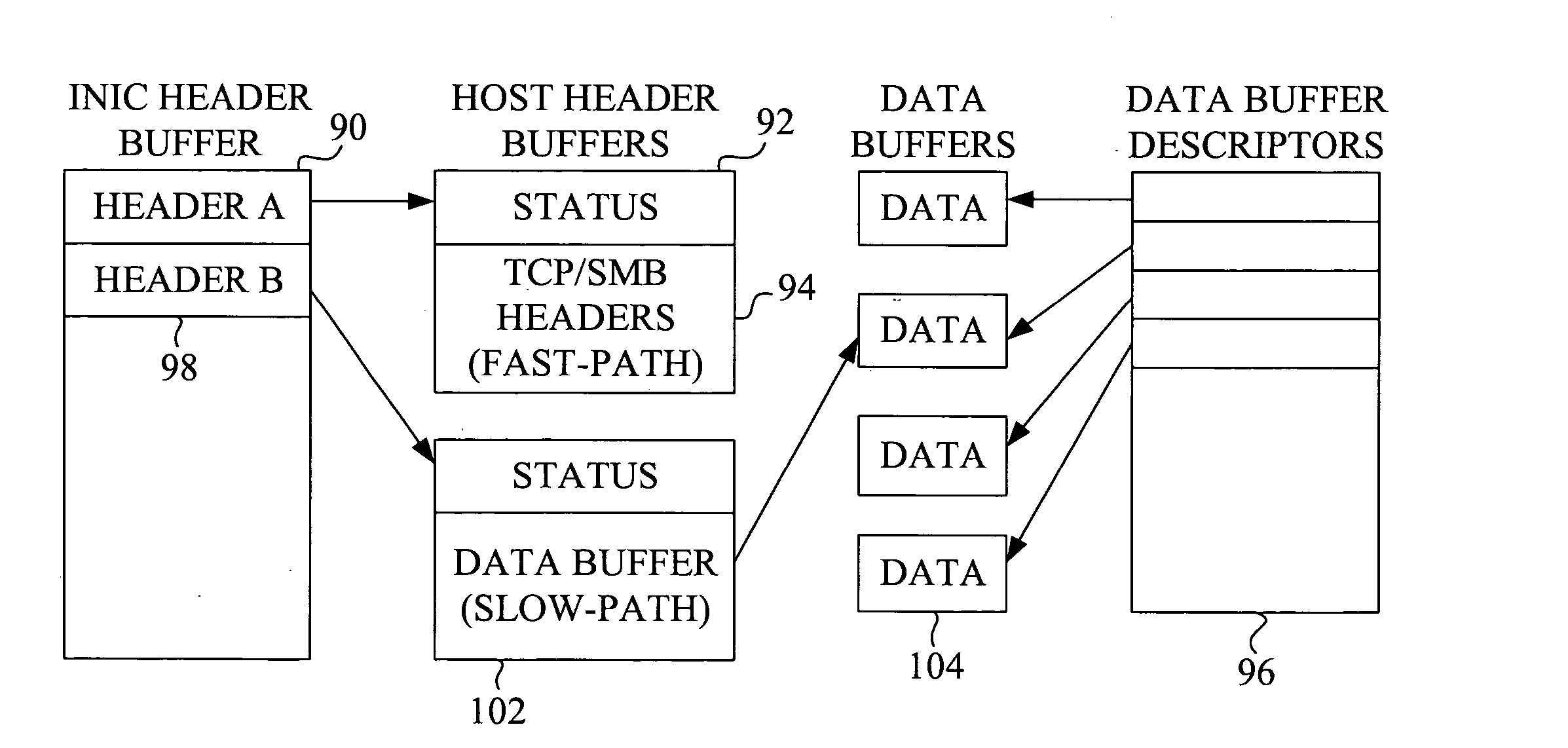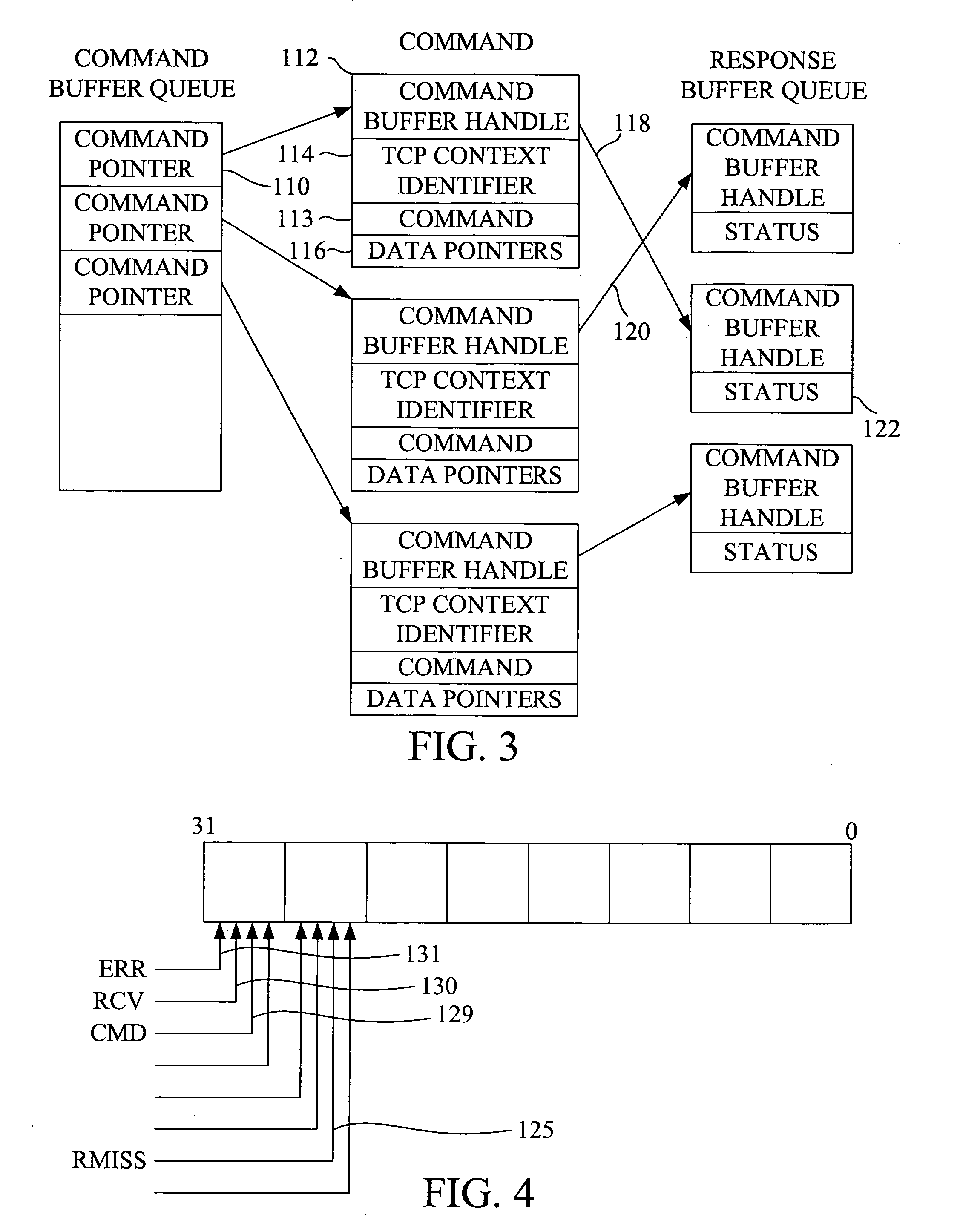Method and apparatus for data re-assembly with a high performance network interface
a network interface and high-performance technology, applied in the field of high-performance network interface reassembly and data reassembly, can solve the problems of cpu stalling, high cost, inefficient use of system resources, etc., and achieve the effects of avoiding header processing, data copying and checking, and cost-effectiveness
- Summary
- Abstract
- Description
- Claims
- Application Information
AI Technical Summary
Benefits of technology
Problems solved by technology
Method used
Image
Examples
Embodiment Construction
[0073] In order to keep the system CPU from having to process the packet headers or checksum the packet, this task is performed on the INIC, which presents a challenge. There are more than 20,000 lines of C code that make up the FreeBSD TCP / IP protocol stack, for example. This is more code than could be efficiently handled by a competitively priced network card. Further, as noted above, the TCP / IP protocol stack is complicated enough to consume a 200 MHz Pentium-Pro. In order to perform this function on an inexpensive card, special network processing hardware has been developed instead of simply using a general purpose CPU.
[0074] In order to operate this specialized network processing hardware in conjunction with the CPU, we create and maintain what is termed a context. The context keeps track of information that spans many, possibly discontiguous, pieces of information. When processing TCP / IP data, there are actually two contexts that must be maintained. The first context is requi...
PUM
 Login to View More
Login to View More Abstract
Description
Claims
Application Information
 Login to View More
Login to View More - R&D
- Intellectual Property
- Life Sciences
- Materials
- Tech Scout
- Unparalleled Data Quality
- Higher Quality Content
- 60% Fewer Hallucinations
Browse by: Latest US Patents, China's latest patents, Technical Efficacy Thesaurus, Application Domain, Technology Topic, Popular Technical Reports.
© 2025 PatSnap. All rights reserved.Legal|Privacy policy|Modern Slavery Act Transparency Statement|Sitemap|About US| Contact US: help@patsnap.com



